Data Transparency: Definition, Benefits, and Tools for 2024
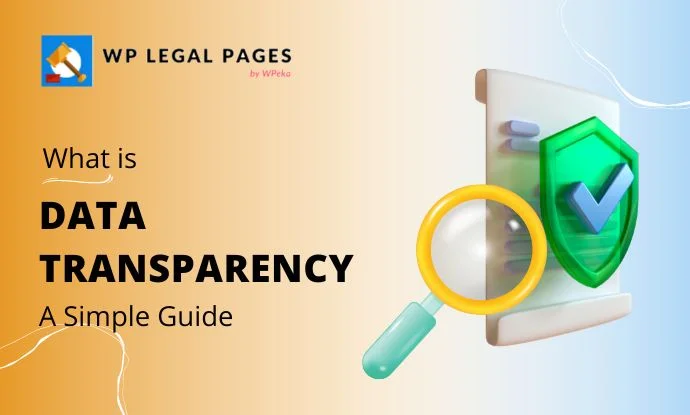
Are you looking to learn about data transparency and how to help your users’ better?
Data transparency aims to safeguard users’ data. In simple terms, it means making data easily accessible and understandable to people.
Ensuring users have access to transparent data that promotes confidence and reliability among users.
Transparency in data with users promotes dependability and trust. Companies that focus on transparency in their operations always have significant benefits, which lead to increased customer loyalty.
In this article, we will discuss data collection and best practices for implementing data transparency on websites.
What is Data Transparency?
Data transparency is the process of making data easily accessible and understandable. The aim is for the public to access information regarding gathering, using, and exchanging data. Transparency in data collection encourages accountability and helps prevent data misuse.
Organizations that are transparent and truthful about their data acquisition practices enjoy more public trust. When data collection is transparent, people can discover what personal information is being collected and how it will be used.
Trust between people and organizations must be built to maintain positive relationships over time, and transparency makes this possible.
Data transparency has several advantages.
- Businesses can boost customer trust and make better decisions with the aid of data privacy.
- Increasing data openness allows government agencies to interact with the public and become more accountable.
- When people know how data is collected and used, they can better decide about their privacy.
- Confidence is strengthened when institutions and authorities are forthright and truthful about their data usage practices.
Why Data Transparency Matters?
Data transparency matters for several reasons. Reasons such as:
- Accountability and Trust: Transparency regarding an organization’s data practices fosters trust among its members, which includes partners, employees, and customers. By being transparent about this process, organizations can show that they are accountable for the data they acquire, use, and safeguard.
- Compliance and Legal Requirements: Organisations must abide by legal requirements surrounding data transparency in light of the growing priority on data privacy rules like the CCPA and GDPR. Breaking these rules can result in heavy fines and reputational harm.
- Risk management: By implementing transparent data practices, website owners can detect and reduce possible risks related to data processing. They can also strengthen their defenses against security threats and data breaches by better understanding who has access to the data, where it originates from, and how it is processed.
- Empowerment of the User: Open data policies enable customers to make knowledgeable decisions about their data. When people know how their information is used, they have more influence over their privacy settings and consent preferences.
- Collaboration and Innovation: Open data exchange fosters collaboration and innovation. By providing academics, developers, and other stakeholders with access to data, organizations can stimulate new ideas, solutions, and collaborations that push growth and advancement.
Data transparency is generally necessary to maintain trust, comply with legal obligations, and meet ethical standards.
Data Transparency Examples
In this section, we will look at some of the best data transparency examples worldwide so that as a website writer, you will have an idea of how to protect users’ data.
1. The Guardian
One of the most widely read newspapers in the UK, The Guardian, uses and collects a lot of personal information. Nevertheless, the business has a long history of reliability. It has a highly proficient and transparent digital relationship with its users.
Rather than using a traditional privacy agreement, The Guardian produced a small video explaining the processes for collecting, utilizing, and preserving information.
Although a privacy policy has its uses, The Guardian admitted that the majority of customers will not read it. Instead, they had a video clip explaining everything users needed to know about their open methods of gathering data.
2. International Business Machines (IBM)
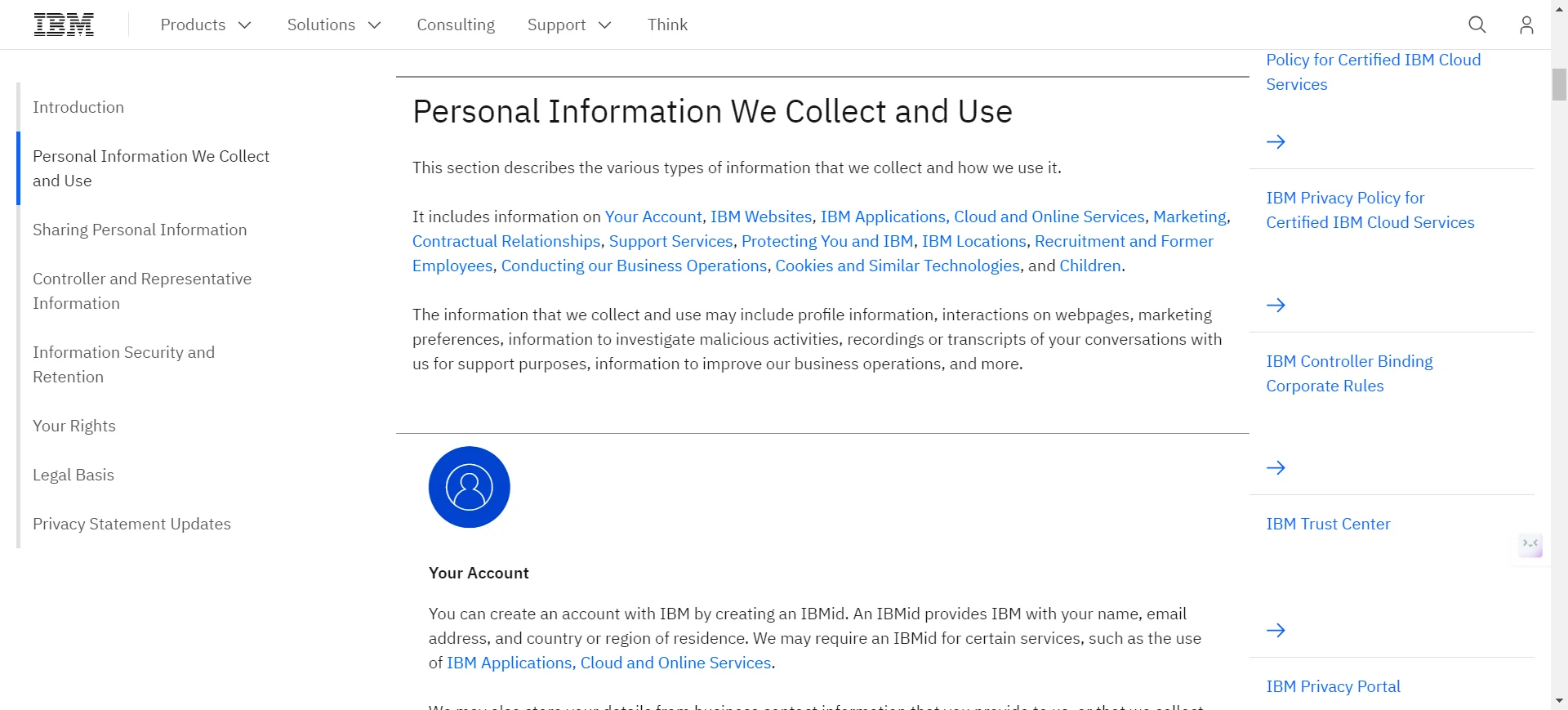
IBM is a major manufacturer of computers and software. It wants you to appreciate its products and ensure they are easy to use.IBM’s privacy policy demonstrates the company’s commitment to safeguarding user data.
It limits data collection to what is necessary for business operations, outlines strict data protection protocols, ensures transparent data practices, gives users control over their data, and complies with applicable data protection laws and regulations.
3. ZOHO
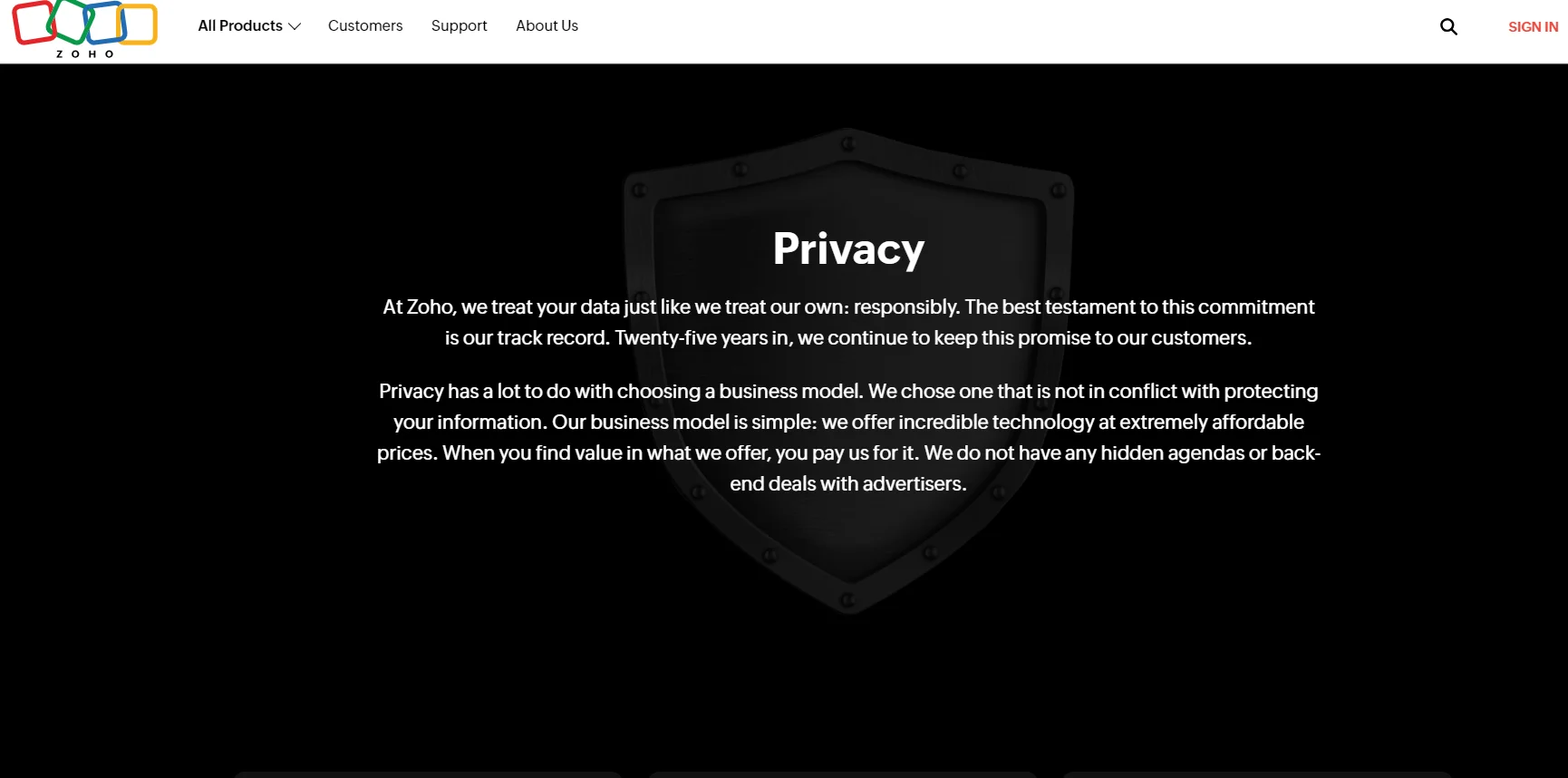
Zoho is among the few Indian organizations that have taken a unique approach to handling customer information. Unlike other organizations, Zoho does not use traditional trackers to gather and sell data to other businesses. Instead, it has committed to prioritizing the needs of its clients over data collection.
Through its public declaration, they stated it will neither collect nor share personal information with third parties, Zoho has set a new standard for data transparency. This sets Zoho apart from its competitors and may attract users concerned about the security of their personal information.
4. Google
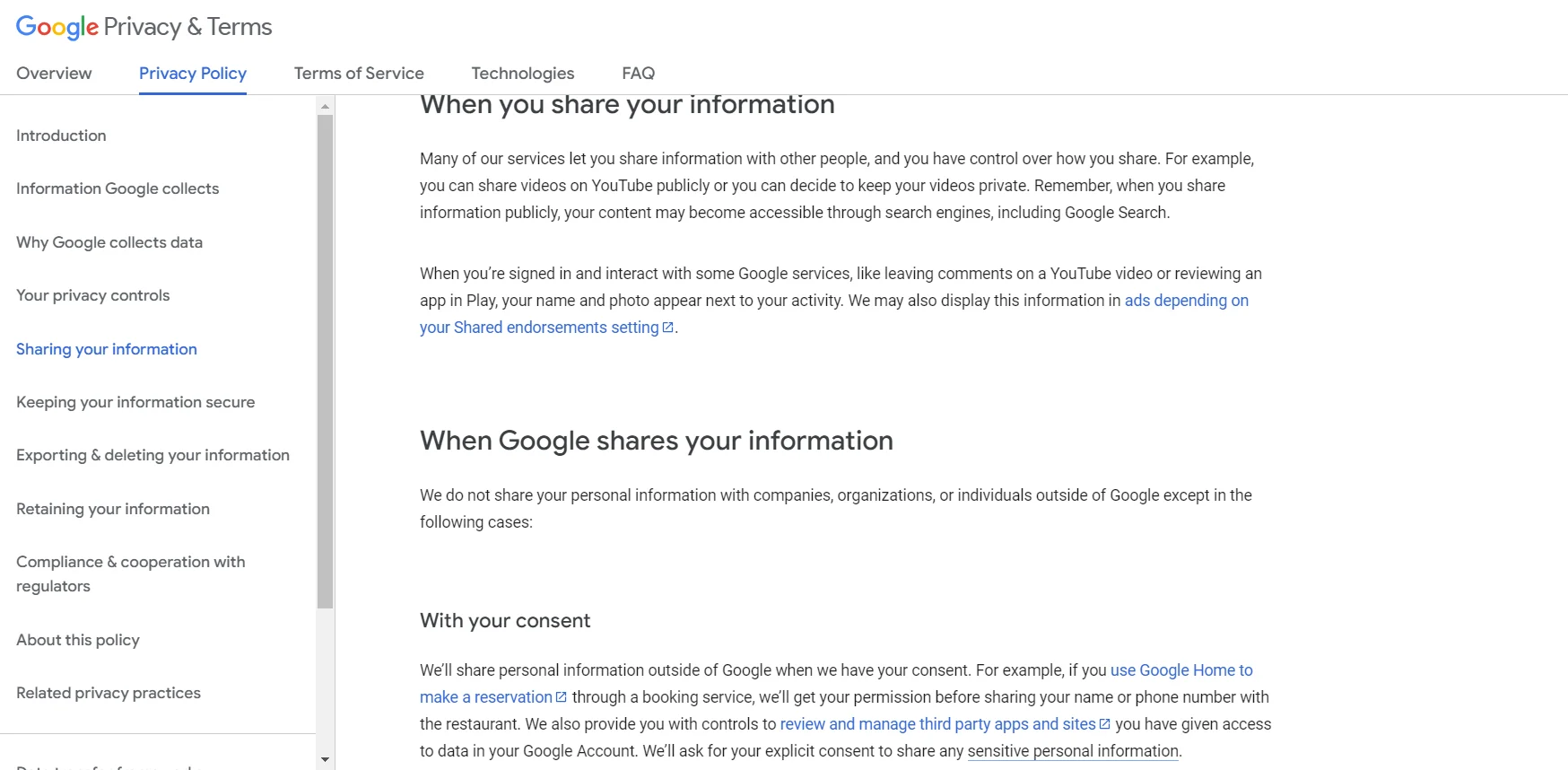
Google is a technology company that provides several services, including search engines, YouTube for streaming videos, and app stores (Google Play). It emphasizes user interaction by allowing users to share material like YouTube videos or Google Play reviews.
Google asks users for consent before sharing personal information with third parties unless it’s necessary to enable services like Google Home bookings. This is in line with Google’s privacy statement.
Users can control which third-party apps and websites can access their data, and Google expressly asks permission before disclosing sensitive personal information.
5. Slack
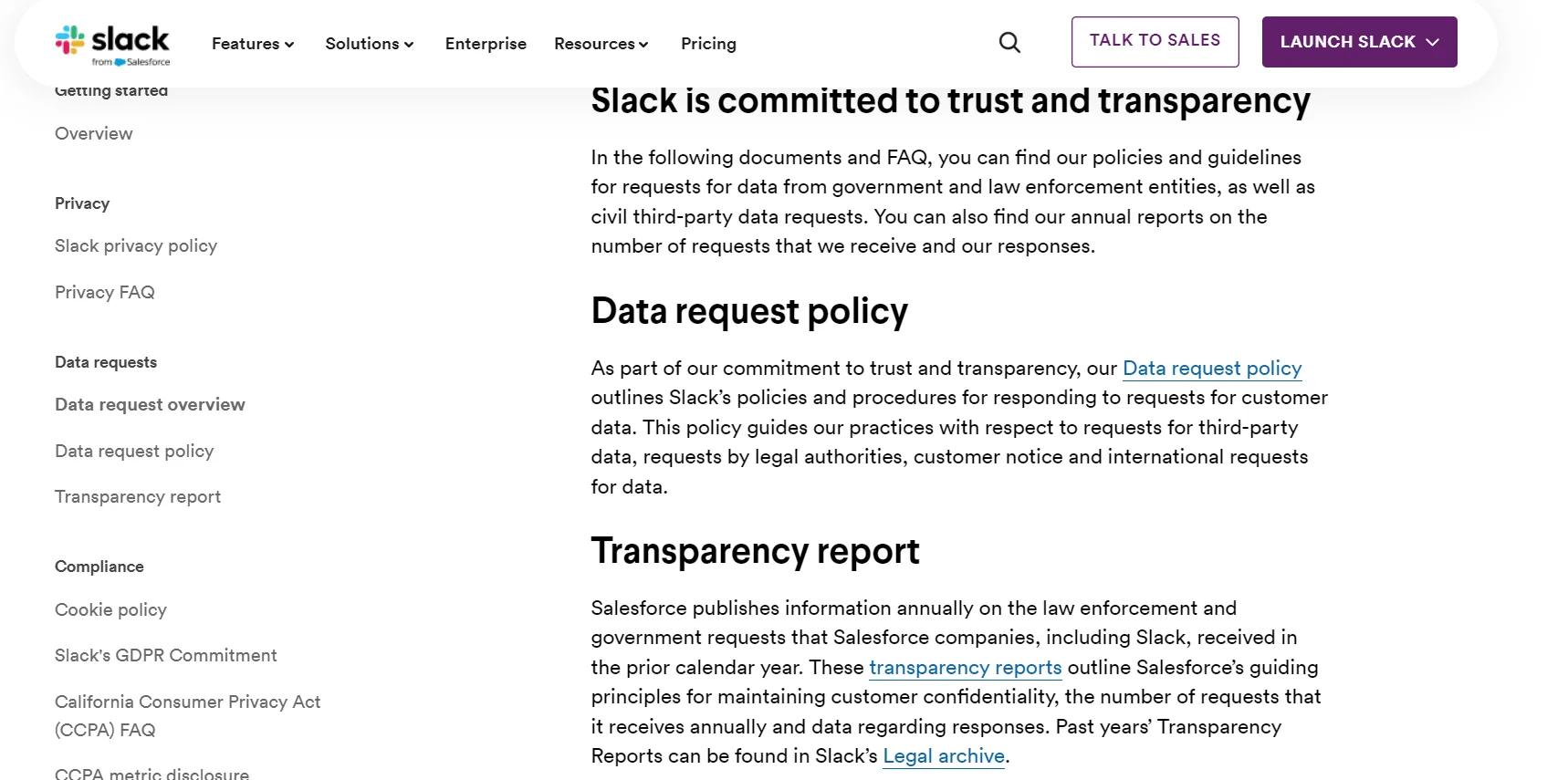
Slack has made its privacy policy easy to read and understand, which has helped make consumers interested in data transparency.
They have created a simplified privacy policy that is easy to read, unlike many other companies that tend to create lengthy and comprehensive ones. You can see a sample of their privacy guidelines here.
Best Practices to Improve Data Transparency
Good data collection and administration require acquiring relevant data, ensuring data integrity, and following applicable regulations to promote transparency and trust.
This section will discuss the best techniques for collecting and organizing data.
1. Complying With Law
Adherence to data protection laws, such as the CCPA and GDPR, indicates a dedication to data openness. These rules require organizations to keep data organized and to give people access to acquired data upon request.
Respecting data protection regulations can build confidence with stakeholders by demonstrating a commitment to data transparency. Additionally, it helps guarantee that data is gathered and utilized properly, reducing the possibility of fines for non-compliance and building the organization’s reputation.
2. Be Open About Data Collection Practices
Some people accept the customized marketing technique, but the data collected online worries many customers. Transparency about the data you gather and its use can establish trust with website visitors.
Additionally, it offers a chance to reward customers for sharing information. Offering a service, product, or discount in return for information can be very effective in gaining data and a new client.
3. Gathering Useful Information
Organizations that want to gather data effectively should focus on getting relevant information. This will allow them to concentrate on crucial insights, reduce the cost of analysis and storage, and give each stakeholder a unique experience.
Identifying your data sources and research objectives is an essential initial step in developing your data strategy. Organizations should clearly define their objectives and gather relevant information from various sources.
Maintaining data privacy and security and utilizing standardized data formats are crucial to ensure data quality and avoid costly errors like identity theft or security breaches.
4. Maintaining Data Integrity
Data integrity guarantees that data is accurate, full, and consistent. Organizations should use standardized data management procedures to lower the risk of data loss or corruption and guarantee data integrity.
They can reduce the risk of data loss or corruption by securing data with encryption, implementing data backup and recovery mechanisms, and regularly auditing their data.
A key component of data transparency is ensuring data integrity, which gives users trust in the information they access and utilize.
Data Transparency Tools
Data transparency tools are software applications or platforms that provide information about how an organization collects, processes, and uses data.
The data governance principles guarantee adherence to data protection laws and facilitate comprehension of data handling by enterprises and their.
These platforms can trace data history, provide reports or dashboards for external users and internal stakeholders, and show options for consent and data usage.
Organizations can meet regulatory requirements and contemporary principles of ethical data management and consumer rights by giving users control over their personal data through data transparency technologies.
Using a tool like WP Cookie Consent can effectively simplify your data transparency, reporting it in a single, user-friendly data portal. This tool lets you clearly inform customers about your data collection methods, technologies, and third-party data sharing.
Additionally, you should inform your customers clearly and concisely about the collection procedure, technology, and sharing of their data with any third party. So, we recommend using WP Legal Pages to help you create seamless legal pages for your website.
FAQ
To ensure data transparency, organizations should prioritize collecting and gathering only the required information, involving clients in the process, outlining the collection and use of data, developing a strategy for data transparency, and being aware of applicable laws.
Transparency in data-gathering procedures is essential for customers and businesses to develop a sense of accountability and confidence. Customers can make more informed decisions regarding their security and privacy when they understand why their data is required and how it is collected, maintained, and safeguarded.
Conclusion
Organizations must fully comprehend and utilize data transparency. This guide aims to define the concept of data transparency, highlight its importance, and provide some real-world applications.
To achieve greater data transparency, we have also discussed best practices for safeguarding data and recommended certain tools that can be used to enhance the transparency of data management processes.
By adhering to these guidelines and utilizing the right resources, businesses can ensure responsible handling of data, promote transparency, and build trust. Prioritizing data transparency boosts stakeholder confidence and contributes to the development of a more accountable and sustainable data ecosystem.
If you’ve liked reading this article, check out our other engaging articles as well:
- Digital Markets Act: What Website Owners Need to Know
- Most Common Privacy Policy Issues To Avoid
- What is Data Privacy? – Everything You Need To Know
Are you excited to create a privacy page for your website? Grab WP Legal Pages now!
